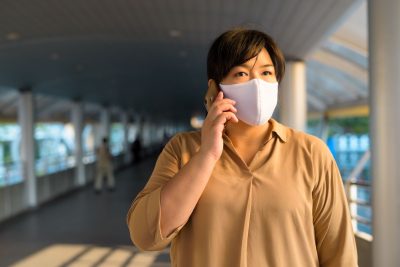The COVID-19 landscape is continually changing, but the disproportionate impact of COVID-19 on migrant communities including their mental health remains consistently inequitable.
The pandemic quickly shot into focus large gaps in multicultural health support systems in Australia with unprecedented interest.
From the absence of health data available on multicultural populations, to the lack of multicultural healthcare and wellbeing services, and the major disparities in policy and underrepresentation of multicultural populations in Australia – these barriers have impacted our daily work.
As an Australian multicultural health social enterprise, charity and primary health service, we see these disparities constantly. However, the gaps have become of paramount importance to the whole nation due to the pandemic.
With no strong infrastructure for leadership in the area of migrant health, it is clear the multicultural population lacks representation across all levels of public policy. In the early days of the pandemic, we were left to ourselves.
Given the social, economic and political positioning of migrants in Australia (a minority population), the COVID-19 pandemic had a ‘compounding effect’ on our clients at World Wellness Group.
As service providers, we noted when the pandemic emerged that our clinic’s staff including Multicultural Peers Support Workers (MPSWs) and other health practitioners, reported community-level information about job losses, food and housing insecurity, increased racism, a lack of language-specific information about COVID-19, and heightened levels of anxiety and other mental health concerns.
Furthermore, many local service providers ceased engagement and service delivery with new and existing clients, in some instances temporarily and others all-together. Therefore, with this reduced network of front-line service providers in the community, demand for our mental health services increased rapidly. One of our mental health programs for people from multicultural backgrounds recorded a 237% increase in referrals. Currently, January 2022, we are again experiencing a situation where service providers are closed due to a lack of staff due to the escalated pandemic.
A key part of the clinic’s initial service delivery response to the pandemic in 2020 was to conduct 311 welfare checks by telephone to our most ‘at-risk’ clients. This provided a mechanism of client outreach to directly engage with people who were considered most at risk of COVID-19 by age, social circumstances, chronic disease and mental health risks and provide information on immediate care and support needs available.
Many clients were ethnically diverse with the top five identified ethnicities (in descending order) being Iranian, Congolese, Sri Lankan, Burundian and Syrian. A standardised script was used by our bilingual and bicultural team.
Through the telephone checks, we uncovered local inequalities experienced by multicultural populations. Our first major finding was evidence of a pattern of immediate client hardship. Many clients used our engagement mechanisms to discuss medical issues; seek information on COVID-19; ask questions related to procuring regular medications and referrals to general and mental health services.
Most clients (78%) requested a follow-up from a nurse and asked to ‘stay in touch’ given the perceptions about a lack of social contact following the emergence of the COVID-19 pandemic. This further demonstrates that once people have a pathway to support that they trust and understand, they are more than likely to make use of the support service. Our clients also noted struggles around food security and the heighten racism toward them in the community.
Our second finding was the issue of broader social needs. Clients were requesting support for Centrelink applications; Status Resolution Support Services applications; employment support; accommodation support; rent assistance; and requested personal protective equipment such as face masks, detergents, sanitizer and gloves. This indicated to us that there was a lack of accessible resources available in the community for multicultural populations to turn to.
Our third finding was the lack of information in diverse languages that was easily accessible. Despite a concerted effort to engage health consumers with locally produced health information from Government sources, only 16.9% indicated they had engaged with the Australian Government health website and 27.7% indicated they had engaged with the Queensland Health website.
Data highlighted that television, internet and social media sources featured strongly as preferred sources of information, as well as informal networks of families and friends instead of government resources. It was also noted that our clients used international sources for information, which is an interesting anomaly as much of the information communicated during the COVID-19 pandemic has been region-specific, including restrictions and local arrangements.
These findings and our telephone outreach work led to the establishment of the Multicultural Connect Line (MCL). Click here to view the MCL webinar. The MCL is at the forefront of service delivery today and the data we collect on the MCL is a valuable tool for service planning.
As the pandemic continues on today, so do the disparities on the national and local level. In order to respond more effectively, there must integration within a broader social service delivery framework, ideally one situated within a health promotion framework, that reflects the critical role of social determinants of health of migrant populations, including discrimination, migration status, ethnicity, exclusion from universal healthcare, culture, and structural disadvantages.
Further, a multicultural health policy framework for Australia must be established to guide and drive health inequities not only during a pandemic, but into the long-term future.
Click here to download the extended article.








